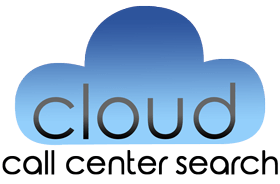Omnichannel Call Center Software
Omnichannel has been a buzzword for quite a while, but a lot of companies incorrectly interchange multichannel with omnichannel. Multichannel is a system that has the ability to communicate through multiple channels, while omnichannel is the ability to communicate in a single system through any channel maintaining a consistent customer view.
Most systems today are still not truly Omni because they are missing the system of record capabilities in order to allow for a holistic customer view no matter the channel.
Omnichannel solutions can also be delivered from multiple vendors as long as the integrations allow for consistent viewing of the customers record for every channel. Because most companies already have a CRM or system of record, it becomes imperative that the omnichannel solution you select has integrations to your system of record to allow data to pass back and forth seamlessly.
No matter your scenario, your customers are likely communicating to you in multiple channels but you may not have consistent visibility into the data. This does not mean you are lost, as the market is still trying to catch up to this model, but it is likely your competition has an edge on winning customers over through being available on their preferred channel.
If you have a core telephony platform, as almost all contact centers do, then you can still add in systems to bring you the digital channels to add on.
How Omnichannel Systems Benefit your Call Center
Omnichannel systems allow for simple navigation between channels, allowing communication through the means your customer prefers. Most Omnichannel solutions should be a single interface with common controls for easy deployment and cross training. If you are a business that services customers, then it is no longer an option to just offer voice service.
One study showed a 300% increase in net promoter value after implementing an omnichannel system.
%
Increase in Net Promoter Value
Considerations when Selecting an Omnichannel Platform
Define your digital and audio channels clearly in order to understand which channels are critical to your new platform. Some providers will charge you the same price regardless of the channels you really need, so be sure to carefully evaluate the omnichannel licensing model from your vendor. Also, take into consideration the vendor’s roadmap, as omnichannel will be a constantly changing technology and your vendor will need to continue to provide new channels as they arise.
Specifically, consider:
- Channels of communication needed immediately and agent use of those channels
- Emerging channels like video based communications and new app-based communications platforms like WhatsApp
- Licensing models – some examples are concurrent user, named user and usage based models
- Current integrations and the willingness of the vendor to work with you to integrate future needs
- Your current critical features – just because a platform doesn’t mean it automatically fits the requirements for your current customer communications systems
Omnichannel Call Center Software Vendors
This is probably one of the most competitive areas in the contact center technology landscape. The market is filled with vendors claiming to have true omnichannel functionality, but after reviewing them carefully you will often find that they are not truly omni. Companies frequently buy other vendors or partner under a white label and ultimately do a poor job of fully integrating the solutions. This does not necessarily disqualify them, but it does mean that you need to have a clear understanding of your organization’s needs and the platform’s capabilities.
There has been a tremendous push into the market from development groups leveraging platform as a service (PaaS) offerings to create a contact center offering powered by major vendors. This trend will continue to clog up the market with offers tools powered by major brands.
As we help clients find omnichannel call center software solutions, our goal is to truly match the client with a company that fits all the needs we identify during the discovery process. We qualify each vendor and determine which want to compete and earn your business. The process is neither simple nor replicated, because each company has unique needs.
